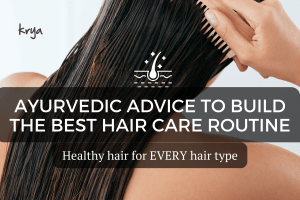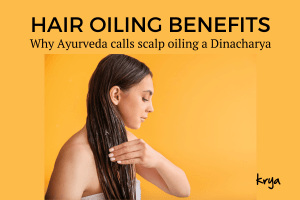This post was last updated on August 12, 2021 by Preethi Sukumaran
Raise your hand if you are a parent whose child has missed school due to an attack of head lice. I am typing this sentence with one hand, with the other hand raised up. Schools, especially the kindergarten variety, routinely conduct lice checks on their wards and send the kids with lice infections home to get immediate treatment.
Lice (singular: louse) cannot fly but they can crawl really fast. So the principal method by which they spread is close human contact, which is why the smaller kids in school who play together are infected easily by lice. Lice also cannot survive for more than a few hours away from the human scalp – so generally they do not spread fast through personal items like combs and towels.
Nevertheless, sharing combs & towels in a home under lice attack is not a good idea as parents and others in the home could get lice infection from the kids. The Center for Disease Control (CDC) reports that every year 6 million to 12 million children in the age group 3 – 11 years in the U.S.A get an attack of head lice. (As an aside, it would great to have such meticulously collected statistics for India. Since it is not readily available we are using the U.S data to get a idea of the size of the global lice scourge) .
Head lice are wingless, blood-sucking parasitic insects that can only live on the human scalp. They lay their eggs on the human hair shaft, which hatch in about nine days. Lice can live for about a month and the female louse can lay about 10 eggs per day. So it is very easy for the lice infestation to spread really fast on a person’s scalp.
Lice are annoying. Really Really Annoying.
They spread fast and cause severe itching and irritation on the scalp. If left untreated for a long time, chronic lice infestations can cause Iron deficiency anemia due to the constant blood sucking.
Lice also cause secondary trouble by harboring several microbes that can cause other infections to the host human.
For example the typhus bacterium Rickettsia prowazekii can spread through the head louse to the hosts. Typhus , which spread through lice, was a global scourge even till the early part of the 20th Century. In 1812, Napoleon’s army of half a million men was reduced to a mere 35,000 men due to a Typhus outbreak. Typhus, courtesy of lice, killed millions of people in eastern Europe around the time of the first world war. Vladimir Lenin famously complained that “either socialism will defeat the louse or the louse will defeat socialism” .
Thankfully the Typhus epidemic has been nearly eradicated and is not a threat.
But the lice still remain with us. As they have, apparently since the dawn of time.
A wooden comb was discovered in an archaeological dig in Israel’s Negev desert, dating to ~ 100 B.C, covered with 10 head lice & 5 nits. In others finds in Egypt, lice nits were discovered on a mummy dating to 5000 B.C. interestingly the mummy was buried along with lice removing combs. So the preferred method for removing lice even 7000 years later remains the same.
What lice beneath: The problem with current lice treatments
The immediate treatment when you first discover the dreaded lice itch is to physically remove the lice with the eponymous comb. This provides temporary relief and does not carry the risk of spreading the contagion through the comb, since lice cannot survive a few hours away from the human scalp. But these little critters leave several tens of their nits (eggs) attached to the hair shaft, which hatch in the next days to continue the attack on the host’s head. Nits are very difficult to remove with the comb. This necessarily means that apart from the comb, a topical treatment like a lice-oil or shampoo is required to win the battle.
Malathion and Permethrin are two common chemical insecticides used in lice treatment products across the world.
Malathion is a very common organophosphate used as a pesticide in agriculture & in public health programs to kill mosquitoes. It is also now used commonly in head lice products where it works by killing lice and partially killing the nits ( eggs)
Malathion is bad news for human health and for the environment. While manufacturers of malathion claim that it is of low toxicity, it is also known that if malathion is absorbed into the human body, it easily metabolizes into Malaoxon which is 61 times more toxic than its parent compound.
Children who ingest malathion may experience headache, dizziness, fatigue , seizures, muscle weakness and even paralysis. Anti-lice products which contain malathion have to be applied & left on the scalp for several hours before wash off. This provides a route for malathion to easily enter the body especially when applied on small children. These products do not provide permanent relief from lice and have to be used repeatedly which aggravates the risk of absorption into the body.
Malathion is now being replaced by another chemical called permethrin in anti-lice products.
Permethrin is a broad spectrum insecticide and works by killing live lice. Common side effects of permethrin are itching, swelling and redness, stinging, numbness, tingling & skin rash. Permethrin can be absorbed through the skin and is very toxic if it accidentally comes in contact with the eyes. If permethrin is accidentally inhaled, it causes irritation in the nose and lungs, difficulty in breathing, headaches, dizziness, nausea and vomiting. After using a permethrin based product, we must remember to thoroughly wash our hands to prevent accidental ingestion with our food.

On the krya blog, we have written on several occasions about the new global risk of “Super Bugs”. These super bugs are created when normal bugs develop resistance to chemicals used to kill them. Due to the indiscriminate wide-spread use of malathion & permethrin in lice products, US & Australia have now reported the emergence of “Super lice” and “ Super Nits” that can survive these chemicals. So now we have a dangerous situation where a permethrin based product is ineffective in controlling lice, causes severe side-effects and after prolonged use creates “Super lice”.
The phenomenon of Super bugs happens only with chemicals because they are inert and fixed in their pathways. However bugs like lice are alive, smart and are capable of mutating fast to evade the chemical pathways and emerge as new super bugs. This does not happen with plant based solutions as plants are intelligent, live beings capable of adapting to the bugs and helping humans fight them without any side-effects.
Now to put this in perspective , most lice products are used on small children, who are experiencing severe itching, irritation and pain due to the infestation. Why do companies formulate products with chemicals like Malathion & Permethrin which can cause irritation when used as advised and are very toxic if accidentally inhaled or ingested ?
On this note, there are several “natural” Anti-lice products which use plant based insecticides like the seeds of the Sitaphal ( Annona Squamosa / Custard Apple). Now this seed is a very effective anti-lice product and has no side-effects. However if it accidentally falls on to the eyes, it is very toxic and can even cause blindness. Due to this at Krya, we strongly advise against the use of Sitaphal seeds in Anti-lice products – the risk is just not worth it.
We have been receiving several Lice Oil requests for sometime now. We finally bit the bug (pun fully intended) last week and made our second batch of the Krya Anti Lice oil (our first test batch was met with a lot of success 2 years ago during our testing phase). For stubborn infestation cases, we’ve added an Anti Lice hair mask and made an anti Lice hairwash to go with this system.
The first people to test out the revised formulations were 2 Krya employees with slightly older school going kids with a severe lice infestation. These kids had been subjected to the usual round of anti lice brands available in the Pharmacy. They reported high eye irritation, feeling of heaviness and headaches with using their previous brands of highly toxic lice oil and shampoo. They were uncomfortable with the lingering smell of these products and also reported slight hairfall after using the commercial anti-lice shampoos. The parents were extremely concerned about the medium and long term safety of using such strong, poisonous substances in such close contact with their children.
After trying out the samples of the Krya anti lice oil, my employees were sent to work with a special request from the kids – to please buy much more of the product for any future Lice infestations!
The kids loved the fragrance of the oil, the way their scalp felt after massage, and most importantly they reported being able to easily comb out both nits and lice after oil application – the lice were not dead, but were incapacitated and were easy to comb out.
We will be talk much more about exactly how we formulate the Krya anti lice system in later posts, but for now, if you are looking for a really natural, non toxic, gentle solution to a lousy problem, explore here:
1. Krya Natural Anti Lice Hair Oil with Thyme & Tamanu –http://bit.ly/kryaantilicehairoil
2. Krya Natural Anti Lice Hair Mask with Sweetflag & Ram Tulasi –http://bit.ly/kryaantilicehairmask
3. Krya Natural Anti Lice Hairwash with Lemon Eucalyptus & Curry Leaf –http://bit.ly/kryaantilicehairwash
4. Krya Natural Anti Lice Hair System – comes with the Oil, Mask and Hairwash (especially recommended for chronic infestation ) –http://bit.ly/kryaantilicehairsystem




